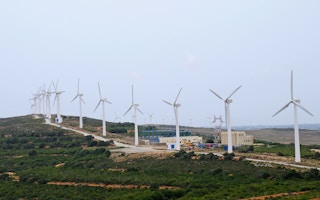Power For All, a global campaign to accelerate the deployment of market-based, decentralized renewable energy (seen as the key to achieving universal energy access) have said the following: “The international community is united by a global mandate and moral imperative to deliver, in just over a decade, affordable, reliable, sustainable, and modern energy access to the billions of people who live in energy poverty.”
When the average-Joe talks about renewable energy they are more often than not referring to the basic idea of solar, wind and hydro power. But the renewable energy sector is a lot more complex and is driven forward by some of the world’s most innovative thinkers and ideas.
Currently the pioneering and ever-transitioning energy landscape in Africa, with its green innovations and disruptive technologies, is allowing more and more for the quick rollout of integrated microgrid energy solutions.
Various global energy experts who will be speaking at the first Energy Revolution Africa conference in May, explain three of the more revolutionary trends likely to transform the energy landscape in Africa.
Blockchain
By Abraham Cambridge, founder of the Sun Exchange
While Africa is home to some of the world’s fastest growing economies the lack of affordable and reliable energy is hindering tangible and sustainable socioeconomic progress.
Despite present issues surrounding energy access, favourable sun-light conditions and historically low solar-panel costs indicate that the cheapest and quickest way for the continent to become electrified is through solar power.
Unfortunately, investing into Africa can be deterred by perceived corruption and currency volatility, which is a problem when getting payments into, and in particular, out of African countries can be time consuming and expensive.
So what is the solution? Many believe it lies in the advent of crypto-currency and blockchain technology. A blockchain allows for peer-to-peer energy microtransactions and accounting. They are an open, distributed system that can record transactions between two parties across borders in a verifiable and permanent way.
Transactions can be programmed to automatically trigger under certain conditions through so-called smart contract, thus doing away with the need for a trusted intermediary in a transaction.
In 2014 I founded the Sun Exchange, crowd-selling platform that enables anyone in the world to buy and then earn revenue from solar panels powering Africa. We use a blockchain system for recording solar asset ownership and we utilise the international remittance properties of Bitcoin. This allows for an autonomous and near instant and secure transfer of value of micro-payments back to the solar asset owner.
Most solar panels in the world are installed on the roofs of commercial and industrial buildings. This is not the case in many regions in Africa, where these projects which are mostly under $1million in value are often left unfunded.
To close this funding gap, we technically validate and then host these solar projects as ‘crowd-sales’. During a crowd-sale, individuals around the world can purchase the photo-voltaic cells that make up the solar panels using Bitcoin micro-payments. Similar to conventional crowd-funding systems, the solar project only gets constructed if all available solar cells are pre-purchased.
To overcome the volatility of bitcoin pricing during a 60-day crowd-sale period, the platform tracks the price and allocates accordingly the number of solar cells to the buyer when the crowd-sale completes.
Once the solar plant is in operation, the owners of the solar cells receive a 20-year stream of lease rental income paid out in Bitcoin sourced from the rental payments of the solar plant user. The solar cells are owned globally by individual digital currency users with ongoing solar powered nano-income payments made possible because of the unique properties of Bitcoin.
I believe that blockchain technology is already revolutionising renewable energy funding in Africa.
“
The renewable energy sector is a lot more complex and is driven forward by some of the world’s most innovative thinkers and ideas.
Energy storage
By Chinedu Igbokwe, sales engineer for the Middle East and Africa region at NEC Energy Solutions
The integration of intermittent renewables like PV or wind is typically not an issue in small amounts, but as the percentage of electricity derived from these variable resources increases, the ability to integrate all that renewable energy becomes more challenging.
In many ways, the grid needs to be prepared to accept a shift from on-demand thermal generation to variable generation. This is where energy storage steps in. It is one of the resources that can integrate renewables very effectively and compensate for the variability in sun and wind.
Energy storage has already been quite effective in increasing the reliability and resiliency of grids around the world, whether in high penetration renewable environments like Hawaii, to very large stable well-interconnected grids like central Europe.
First and foremost, it is the ability for fast responding energy storage to provide ancillary services, balancing services like frequency response, capacity reserve, or frequency regulation. With the obligation to provide primary and secondary reserve being met by energy storage, the existing generation sites can free up its reserve capacity to help meet the electricity needs, without needing to install brand new generation.
Secondly, in those areas where renewable generation is beginning to be deployed, the ability to manage grid frequency can also become more challenging, and this is another area where energy storage can strengthen and prepare the grid for a more variable generation fleet.
What this means for countries in Africa is that energy storage can provide support to existing generation and transmission infrastructures as well as help introduce renewables and avoid inefficiencies in integrating them. Storage can help us extract all the value from existing and new resources, avoiding things like curtailment or inefficient operations of thermal generation, and create a more resilient power system while cleaning it up at the same time.
Energy storage for the grid has begun to adopt lithium ion battery technology as the mainstream technology for storing electricity. Today it represents the most effective core technology that powers the large grid energy storage installations that have more recently been seen around the world. Within the battery field there are many different chemistries being contemplated, all of which promise to improve on energy density, safety, durability, or power capability.
Mini grid and off-grid technology
By Marco Rahner, head of engineering and technical sales at Siemens
The scale of Africa’s energy poverty is massive. The size of the continent and the remoteness of so many people means that small, off-grid projects are often the most effective way to expand access to electricity.
Micro grids provide an immediate solution for rural Africa to gain access to electricity and as these off-grid projects incorporate renewable energy sources to generate electricity, they are a sustainable and ultimately more reliable solution than the large, national grids run by parastatals.
While any countries in Africa do have Rural Electrification Authorities (REA) they are largely dependent on the extension of the transmission and distribution grids to get power to rural communities and households. The introduction of small scale mini or micro grids with distributed generation provides them with a more manageable option of electrification.
We all watched mobile telephony, in many African countries, leapfrog the traditional telecommunications giants, making the Continent one of the most mobile connected in the world and giving millions of out of reach Africans, access to phones. Mini grid and off-grid technology provides a very similar opportunity for renewable energy to do the same. Why is this?
It’s more affordable. There is no need for expensive specialist resources and there is a reduction of OPEX (less manpower needed). It is more reliable because it is decentralized (and the supply is not reliant of large power plants) and it a lot more environmentally friendly.
Last year Kenya’s energy secretary, Charles Keter said that his country will never achieve its universal energy access goal by 2020 without off-grid renewables, especially in remote Northern Kenya. And this is why we are seeing companies stepping up with pay-as-you-go business models to deliver off-grid solar services to millions of rural Kenyans. This business model is a great example of how to make off-grid solar technology work for remote areas.
To conclude, Power For All’s 2016 report stated: “Decentralized energy like mini-grids and solar home systems are viable options to economically deliver fast, efficient energy access in areas where centralized grids are slow and prohibitively expensive to deploy”.
The report also showed that off-grid technologies can be installed in half the time and at one-tenth the cost of the larger industrial sized projects. Micro grids can also encourage development in an area. The single producers have to work together by exchanging energy and supply and then channel that into community use (like water pumps, communication and schools).
Events like Energy Revolution Africa give the African (and indeed global) energy community a platform to explore how it is possible to transform the way the Continent generates, uses, and pays for energy. With the growing global understanding and acceptance of renewable power as legitimate solution, the sky is the limit.
African Utility Week 2017 and Energy Revolution Africa will take place from 16 to 18 May 2017 at the Cape Town International Convention Centre (CTICC), South Africa.









